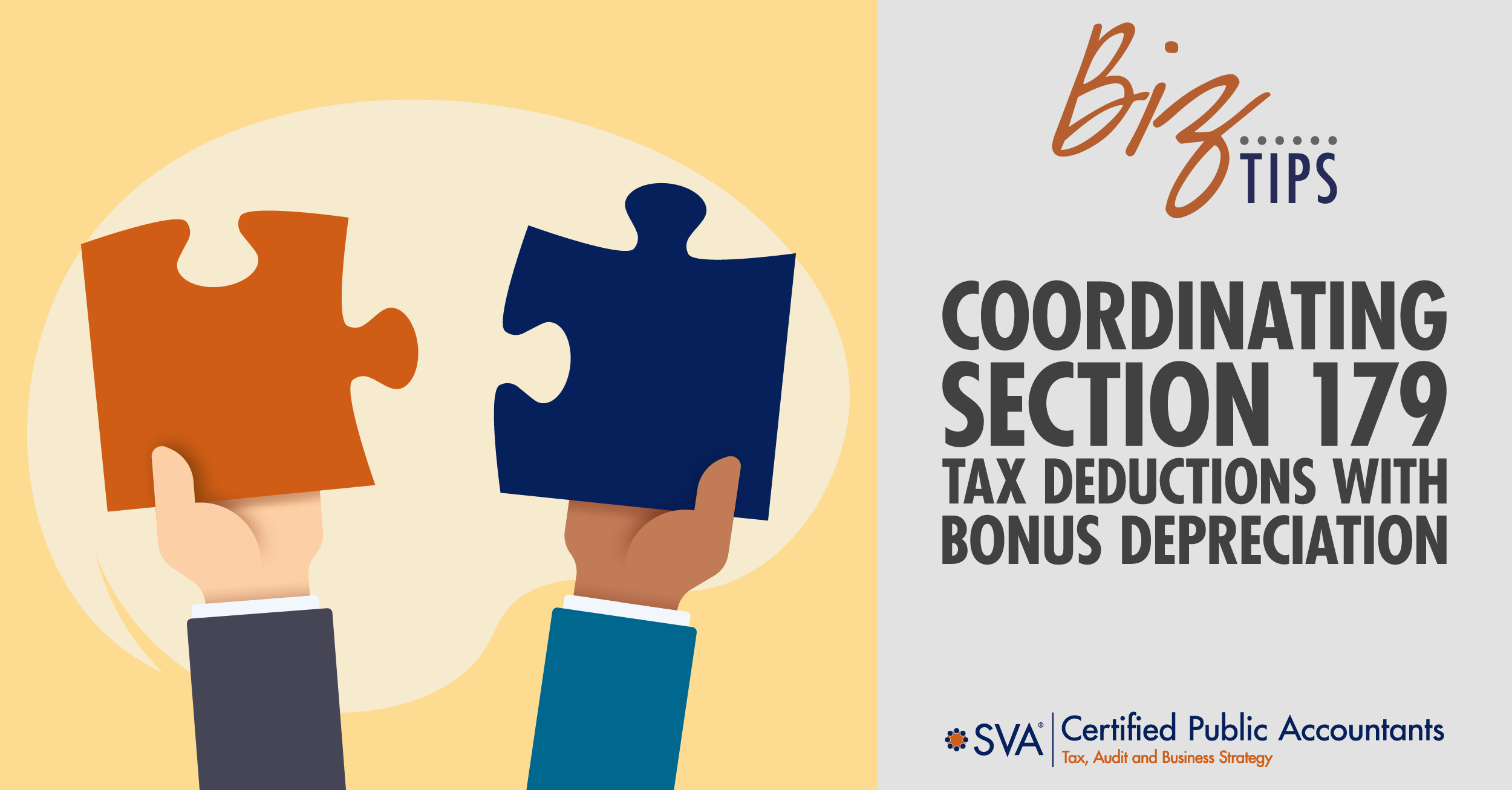Your business should generally maximize current-year depreciation write-offs for newly acquired assets. Two federal tax breaks can be a big help in achieving this goal: first-year Section 179 depreciation deductions and first-year bonus depreciation deductions.
These two deductions can potentially allow businesses to write off some or all of their qualifying asset expenses in Year 1. However, they’re moving targets due to annual inflation adjustments and tax law changes that phase out bonus depreciation.
With that in mind, here’s how to coordinate these write-offs for optimal tax-saving results.
Section 179 Deduction Basics
With the passing of the One Big, Beautiful Bill (OBBB) in July 2025, there are changes to the Section 179 deduction. Read the following Biz Tip to learn the latest updates on the Section 179 deduction:
Section 179 Gets a Boost With New Expensing Limits |
Most tangible depreciable business assets — including equipment, computer hardware, vehicles (subject to limits), furniture, most software, and fixtures — qualify for the first-year Section 179 deduction.
Depreciable real property generally doesn’t qualify unless it’s qualified improvement property (QIP). QIP means any improvement to an interior portion of a nonresidential building that’s placed in service after the date the building is placed in service — except for any expenditures attributable to the enlargement of the building, any elevator or escalator, or the internal structural framework. Section 179 deductions are also allowed for nonresidential building roofs, HVAC equipment, fire protection systems, and security systems.
The inflation-adjusted maximum Section 179 deduction for tax years beginning in 2024 is $1.22 million. It begins to be phased out if 2024 qualified asset additions exceed $3.05 million. (These are up from $1.16 million and $2.89 million, respectively, in 2023.)
(Download Video Transcript)
Bonus Depreciation Basics
Most tangible depreciable business assets also qualify for first-year bonus depreciation. In addition, software and QIP generally qualify. To be eligible, a used asset must be new to the taxpayer.
For qualifying assets placed in service in 2024, the first-year bonus depreciation percentage is 60%. This is down from 80% in 2023.
(Download Video Transcript)
Section 179 vs. Bonus Depreciation
The current Section 179 deduction rules are generous, but there are several limitations:
- The phase-out rule mentioned above.
- A business taxable income limitation that disallows deductions that would result in an overall business taxable loss.
- A limited deduction for SUVs with a gross vehicle weight rating of more than 6,000 pounds.
- Tricky limitation rules when assets are owned by pass-through entities such as LLCs, partnerships, and S corporations.
First-year bonus depreciation deductions aren’t subject to any complicated limitations. But, as mentioned earlier, the bonus depreciation percentages for 2024 and 2023 are only 60% and 80%, respectively.
So, the current tax-saving strategy is to write off as much of the cost of qualifying asset additions as you can with Section 179 deductions. Then claim as much first-year bonus depreciation as you can.
Example:
In 2024, your calendar-tax-year C corporation places in service $500,000 of assets that qualify for both a Section 179 deduction and first-year bonus depreciation. However, due to the taxable income limitation, the company’s Section 179 deduction is limited to only $300,000.
You can deduct the $300,000 on your corporation’s 2024 federal income tax return. You can then deduct 60% of the remaining $200,000 ($500,000 − $300,000), thanks to first-year bonus depreciation.
So, your corporation can write off $420,000 in 2024 [$300,000 + (60% x $200,000) = $420,000]. That’s 84% of the cost!
Note that the $200,000 bonus depreciation deduction will contribute to a corporate net operating loss that’s carried forward to your 2025 tax year.
Manage Tax Breaks
As you can see, coordinating Section 179 deductions with bonus depreciation deductions is a tax-wise idea. We can provide details on how the rules work or answer any questions you have.

© 2024

